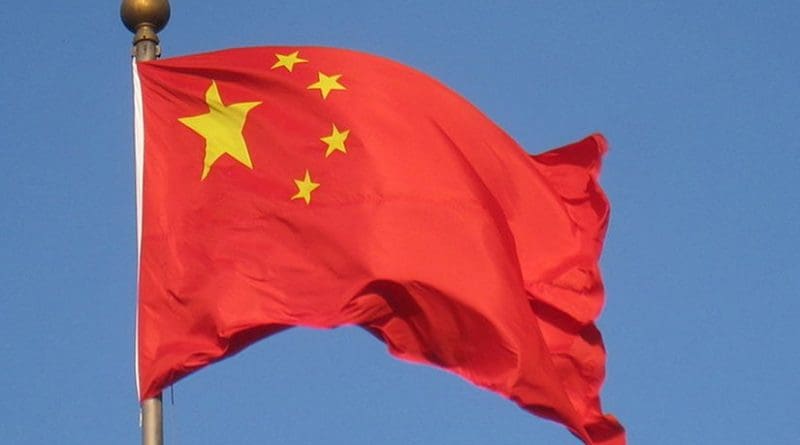Show Of Force In China: Takeaways From V-J Parade – Analysis
By SAAG
By Prof. B. R. Deepak*
A 90 minute massive parade consisting of more than 12,000 troops of PLA formed the main event in the V-J parade in Beijing.
This was followed by cavalcades of high tech weaponry including the much talked about Dongfeng-21D (DF-21D), an anti-ship ballistic missile and many other intercontinental ballistic missiles marched through the Chang’an avenue in a show of force, signifying the arrival of a new power ready to challenge the established Westphalian order. Several factors contributed to the success of the parade including severe traffic restrictions on the Beijing roads, shutting down of the industrial production centres in the vicinity, curfew like situation in some parts of Beijing, and even flight diversions and visa restrictions. The meticulous preparations and the success of the parade has certainly put behind the horrors of recent Tianjin blasts and the shocks of the eroding Chinese stocks.
First and foremost, the parade demonstrates the confidence of Xi Jinping, his hold on army and Party, and that he has been able to silence much of his detractors and consolidate his power ever since he took the reins of the Party in 2012. The anti-corruption campaign across the board, especially against the public security and military ‘tigers’ is noteworthy, least to talk about the ‘flies’ in Party and government apparatuses.
Secondly, the parade also demonstrates uneasiness of the world powers, as well as China as far as diplomacy is concerned. The US, the UK and France were allies of China during the World War II (WWII), but rebuffed the Chinese invitation. Obviously, the spat over the Chinese assertiveness in the South China Sea, and more importantly, the alarm bells of China’s arrival at the world stage as a challenger has rung, are certainly not pleasing to the ears of these leaders. Even India, who irrespective of being a subjugated country did its utmost to help China during the War, only sent a deputy minister to participate in the parade.
Thirdly, the presence of the Russian President Vladimir Putin and many other leaders from third world, especially Africa by the side of Xi, signifies a new alignment of forces structure at the regional as well as world stage. This alignment is bound to get stronger in the coming days as China is pretty clear about the containment of China policy by the West. It is in this context that President Xi has rolled out his ‘Belt and Road’ initiative that connects China with Europe by land and sea, and renders the containment and blockade meaningless. Same analogy could be drawn when China is making its foray into South Asia by way of strengthening trade, investment and connectivity with various South Asian Countries. The acrimony between China and the US led western camp is going to flare further, once the Trans-Pacific Partnership (TPP) comes into being. Nevertheless, China has already broken free from the TPP containment by forging close trade ties with the countries in the Indo-Pacific.
Fourthly, the parade also symbolises the arrival of a modernised and infomatized Chinese military machine capable of projecting power around the world, and that today China is stronger, more prosperous and safer than ever in history. Showcasing the DF-21D and other missile such as DF-26 intermediate range ballistic missile indicates that China won’t hesitate to take on the US in Pacific if the push comes to shove. Xi Jinping announcing the downsizing of the People’s Liberation Army by 300,000 shows China’s confidence in its armed forces as well as the military assets it possess. Gone are the days when China fought the Japanese with poor weaponry and sacrificed more than 3 million people in 14 year long drawn bloody war; Xi assured the Chinese people in his speech that China will never let the tragedy of WWII to visit its people again. The show of strength also reminds of us Mao’s diction that China will buy peace through armed coexistence, even though Xi Jinping ruled out China turning a hegemon or an expansionist power.
Finally, as it has been publicised in China widely that the 70th anniversary of the War of Resistance against Japan, now officially changed as Japanese aggression, is to remember history, to commemorate the martyrs, to sympathise with the victims and more importantly to treasure peace and look forward for the future. China, Xi reminded the world during his speech believes in building common destiny for humankind, and a new international order based on win-win cooperation. Neither did he miss on his China dream, but what was surprising was his listing the ‘four comprehensives’ to the line of ‘Mao’s Thought’, ‘Deng’s Theory’, Jiang’s ‘Three Represents’ and Hu’s ‘Scientific Outlook’. Will the ‘Four Comprehensives’ leave behind a legacy is hard to tell. However, his China Dream will certainly do the trick provided he catapults China to a prosperous society much before the two centenaries slated to be celebrated in 2049.
*B R Deepak is Professor of Chinese and China Studies at the Centre of Chinese and Southeast Asian Studies, Jawaharlal Nehru University New Delhi. The views are solely his own.

